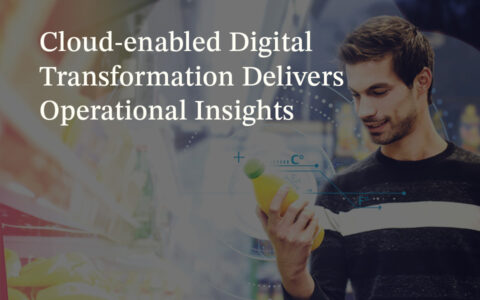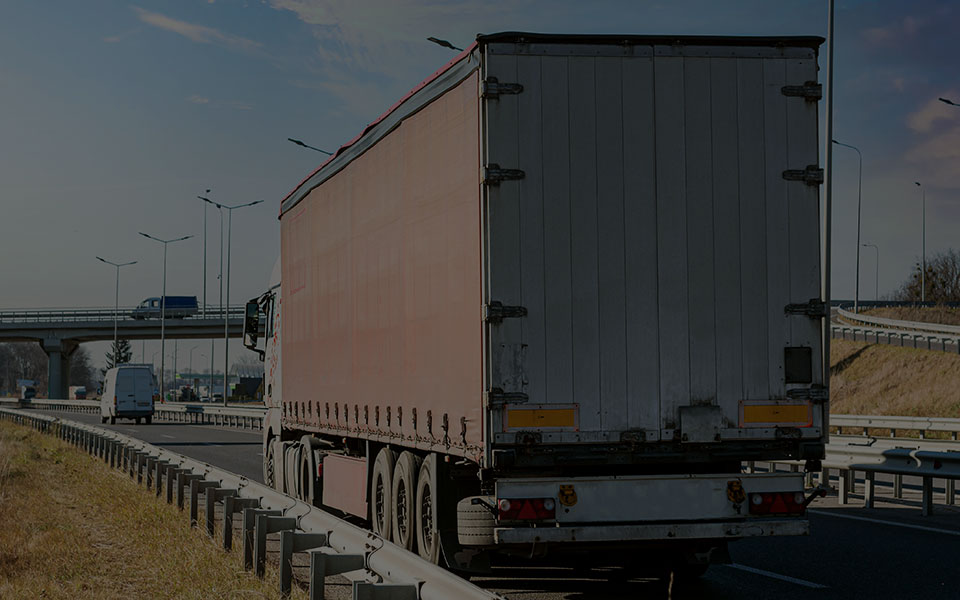Cloud-Enabled Digital Transformation Delivers Operational Insights

*On June 1, 2023 Emerson’s Climate Technologies business became a new standalone company – Copeland. Though our name has changed, we are building on more than a century of HVACR innovation and industry leadership, and Copeland continues to offer the same products, industry stewardship, and learning opportunities you’ve grown to trust. Information found on this webpage posted before June 1, 2023 may contain our old name or branding, but you can be at ease knowing it was created with the knowledge and expertise of Copeland.
Accelerating the evolution from manual processes to digital automation is becoming a top priority in many retail business models. In grocery and convenience stores, this digital transformation is helping to improve efficiencies in the face of escalating challenges — from labor and technician shortages to consumer and competitive pressures to shifting market dynamics. In a recent article for Progressive Grocer, I explored how retailers can leverage the power of the internet of things (IoT) to enable data analytics, drive operational efficiencies and grow profit margins.
Retail stores are data-rich environments from which information is generated continuously — from HVACR equipment, lighting systems, food and beverage stations, and point-of-sale (POS) transactions. Too often, this data lies dormant and remains on “the edge,” underutilized and outside the reach of most retailers. Transforming this raw data into operational insights requires a technological infrastructure that can connect IoT-enabled assets and aggregate data within a secure, cloud-based platform. Here, data can be harvested by data scientists and processed via advanced and ever-evolving machine-learning (ML) algorithms and/or artificial intelligence (AI) techniques.

For most retailers who typically receive operational information within the scope of asset-level control devices, capturing these insights from the edge represents a paradigm shift. It also greatly expands the potential power of data into a robust analytics environment that can deliver continuous insights.
Making the case for local and enterprise-wide insights
At a store level, retailers need to know immediately when temperatures drift from ideal setpoints in food and beverage cases, so they can respond and take appropriate actions. From an enterprise perspective, administrators need tools to help them take a holistic view of their entire store fleet, so they can uncover opportunities for making large-scale improvements and optimizing operational expenses. And as many organizations deal with labor shortages, they also need smart tools to help their staffs focus their efforts and address the most pressing issues at hand.
Edge-derived data insights can achieve all these objectives quickly and effectively.
One of the key differences between edge-based analytics and manual, asset-level interpretation is the sheer speed at which insights are generated. In a traditional model, an alarm indicates when a cooler temperature deviates from its optimal setpoint. Once the store operator becomes aware, technicians are dispatched to troubleshoot and conduct an analysis. The speed of resolution is dependent on the information available to the technician at the time of troubleshooting.
In an edge-based data analytics model, algorithms can assess and diagnose issues rapidly. By consulting with store operators, data experts can build custom algorithms that address specific areas of concern — not within months or years, but within days or weeks. In addition, they can automate system health checks to ensure systems are performing as expected and parameters are set properly. If not, they can recommend changes to correct issues so key assets (e.g., meat cases) can be restored to optimum performance — minimizing the need for truck rolls or technician intervention while reducing energy consumption.
Data analytics teams can extend their insights from remote health checks to evaluate cooler and freezer performance within the larger enterprise store network. And by leveraging this robust data infrastructure, new ML algorithms can be created and deployed easily to drive continuous improvements across the entire enterprise.
As retailers balance their traditional core businesses with emerging electric vehicle (EV) charging stations and sustainability initiatives, many are encountering a new set of operational data challenges. IoT-enabled data analytics, combined with the supervisory control from an energy management system (EMS), can provide the automated tools and operational insights retail store operators need to help them integrate EV stations and achieve energy-efficiency goals — all without compromising food quality/safety or decreasing product shelf life.
Leveraging sales data within information silos
It’s not unusual for a retailer’s operational and sales data to exist in separate silos. As IoT-enabled, edge-based technologies evolve, operators will uncover new opportunities to combine operational and sales data to create promotions, influence consumer behaviors, and grow profits.
For example, if a perishable food item is nearing the end of its usable shelf life, operators could run a new sales promotion to move the product at a discounted rate. By leveraging product inventory data, operators could effectively plan and coordinate sales cycles and better optimize inventory supplies with consumer demand.
IoT-driven insights could also help retailers to optimize other key areas of their operations, such as fresh food preparation or even coffee brewing cycles. These insights could suggest how to optimize brew cycles by identifying when a batch is no longer fresh — or how long hot dogs have been on the rollers — and instruct staff to make fresh batches.
Copeland’s data scientists are ready to help you take the first steps in your data analytics journey. Our industry-leading E3 supervisory control platform acts as a gateway to enable deeper analytics on critical facility systems and enterprise-wide performance. As part of a connected IoT infrastructure, this robust platform provides the energy management capabilities retailers need to meet their sustainability goals.
To learn more about how we can help you derive operational insights from the edge, please contact our data science team.

Six Ways to Reduce Food Waste by Tracking the Supply Chain
by Gerd Uitdewilligen | Cold Chain
*On June 1, 2023 Emerson’s Climate Technologies business became a new standalone company –...

Protect Valuable Shipments in High-Crime Areas
by Lissandra Rodriguez | Cold Chain
*On June 1, 2023 Emerson’s Climate Technologies business became a new standalone company –...

Real-time Tracking Protects Valuable Mango Cargo
by Andres Toro | Cold Chain
*On June 1, 2023 Emerson’s Climate Technologies business became a new standalone company –...
The post Cloud-Enabled Digital Transformation Delivers Operational Insights appeared first on Copeland.